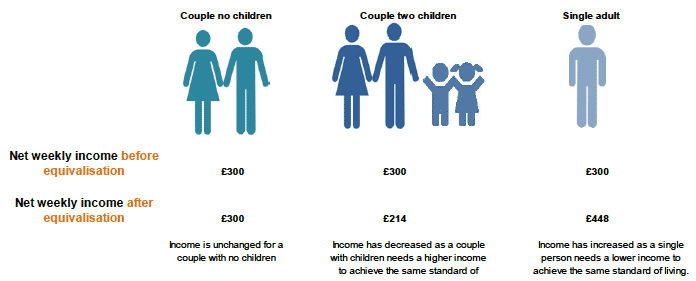Severe Poverty in Scotland
This report investigates the extent of severe and extreme poverty and how it has changed over time for different population groups, in the context of a decade when relative poverty has been falling in Scotland.
INTRODUCTION
About this report
Poverty analysis can sometimes appear to present those classed as 'living in poverty' as one homogenous group, experiencing poverty in similar ways. In reality, poverty is experienced very differently by individuals and households across Scotland, for a variety of reasons. One key difference relates to the depth of poverty people experience. So, while some households dip in and out of poverty or live just below the poverty threshold, others are having to make do with extremely limited resources.
This Scottish Government report investigates the extent of severe and extreme poverty in Scotland and how the depth of poverty has changed over the ten year period to 2012/13, the most recent year of data. The report also considers the influence of particular factors in determining the risk of severe and extreme poverty.
The analysis is focused on data from the Family Resources Survey (FRS), a continuous cross-sectional survey, sponsored by the Department for Work and Pensions (DWP). The FRS provides facts and figures about the living conditions of people in the UK and the resources available to them. It is an annual survey, and includes around 4,000 households in Scotland.
The report takes two main approaches to considering the depth of poverty.
Section A investigates the depth of poverty in Scotland in 2012/13, by considering the following poverty thresholds:
1. Relative poverty - all those individuals who have household incomes below 60 per cent of the UK median income
2. Severe poverty - all those individuals who have household incomes below 50 per cent of the UK median income. Note that this threshold also includes those in extreme poverty.
3. Extreme poverty - all those individuals who have household incomes below 40 per cent of the UK median income.
Section B investigates depth of poverty using a different, but complementary approach. Distinct income bands provide a more detailed analysis of the picture in 2012/13, looking at all individuals and population groups - working age adults, children and pensioners.
Section C uses the same income bands to track change in the depth of poverty over the ten years to 2012/13.
Section D provides an analysis of the risk factors of severe and extreme poverty, including employment status, family type, age of mother, family size, minority ethnic group and disability.
Section E draws out a range of conclusions from the analysis.
An Annex providing brief background on the FRS is also provided at the end of the report.
A note on equivalised incomes
The relative, severe and extreme poverty thresholds used in this report are based on 'equivalised household income'. This is a statistical process which adjusts household income to take into account of variations in the size and composition of the households in which individuals live. 'Equivalisation' thus reflects the common sense notion that, in order to enjoy a comparable standard of living, a household of, say, two adults and two children will need a higher income than a single person living alone. In short, adjusting the incomes of different households enables sensible comparisons to be drawn about them.
As the illustration below shows, equivalisation takes the incomes of a couple with no children as the reference point, and adjusts the incomes of households with fewer or more members, increasing or decreasing it:

Contact
Email: Stephen Smith
There is a problem
Thanks for your feedback